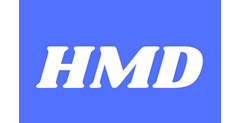Cardiology > Acute Pericarditis
Acute Pericarditis
Background
Acute pericarditis is an inflammation of the pericardial sac that typically presents with sharp, pleuritic chest pain relieved by sitting forward, a pericardial friction rub, and characteristic ECG changes. It is the most common disorder of the pericardium and may be idiopathic, viral, autoimmune, or secondary to systemic or cardiac pathology.
II) Classification/Types
By Duration:
- Acute: <4–6 weeks
- Incessant: >4–6 weeks, <3 months without remission
- Recurrent: Return of symptoms after symptom-free interval of ≥4–6 weeks
- Chronic: >3 months duration
By Etiology:
- Idiopathic/viral (most common)
- Autoimmune/immune-mediated (e.g., SLE)
- Neoplastic
- Tuberculous
- Post-myocardial infarction (Dressler syndrome)
III) Pathophysiology
Acute pericarditis results from inflammation of the pericardial layers. This leads to increased vascular permeability and the accumulation of inflammatory mediators, causing pain and, sometimes, pericardial effusion. In some cases, autoimmune mechanisms (e.g., molecular mimicry) contribute, particularly in recurrent or Dressler-related pericarditis.
IV) Epidemiology
- Age: Common in adults aged 20–50 years
- Sex: Slight male predominance
- Geography: Viral etiologies more common in developed nations; tuberculosis is a leading cause in developing countries
- Incidence: Accounts for ~0.1% of hospitalized patients and 5% of ER visits for chest pain
Etiology
I) Causes
- Idiopathic/viral: Coxsackievirus, echovirus, influenza, HIV
- Bacterial: Tuberculosis, purulent pericarditis (rare)
- Post-infarction: Dressler syndrome
- Post-surgical: Postpericardiotomy syndrome
- Autoimmune: SLE, RA, scleroderma
- Uremic: ESRD with inadequate dialysis
- Neoplastic: Lung or breast cancer, lymphoma, leukemia
- Radiation-induced
- Drug-induced: Isoniazid, hydralazine, procainamide
II) Risk Factors
- Recent viral infection
- Autoimmune disease
- Recent cardiac surgery or MI
- Uremia
- Cancer
- Immunosuppression
Clinical Presentation
I) History (Symptoms)
- Chest pain: Sharp, pleuritic, retrosternal or left-sided; worsens with lying flat, improves with sitting up
- Dyspnea: Often positional
- Fever: Low-grade or febrile depending on etiology
- Fatigue, myalgias: If viral or systemic
- Recent viral prodrome or upper respiratory symptoms
II) Physical Exam (Signs)
Vital Signs:
- Fever
- Tachycardia
Cardiac Exam:
- Pericardial friction rub: High-pitched, scratching sound best heard at the left lower sternal border with patient leaning forward
Pulmonary:
- Clear unless associated effusion compresses lung bases
Peripheral:
- Usually normal; signs of tamponade (hypotension, JVD) suggest pericardial effusion
Differential Diagnosis (DDx)
- Myocardial infarction
- Pulmonary embolism
- Aortic dissection
- Myocarditis
- GERD
- Musculoskeletal chest pain
- Pleuritis
- Costochondritis
Diagnostic Tests
Initial Tests
ECG:
- Diffuse ST-segment elevation (concave) and PR depression
- Later stages may show T-wave inversion and normalization
Chest X-ray:
- May show enlarged cardiac silhouette if large effusion present
- Usually normal
Echocardiogram (TTE):
- Evaluate for pericardial effusion
- Normal LV function
Inflammatory Markers:
- Elevated ESR, CRP
- Leukocytosis
Troponin:
- Mildly elevated if myocarditis component (myopericarditis)
Pericardial fluid analysis (if effusion present):
- Exudative, lymphocytic or neutrophilic depending on cause
- Send for Gram stain, AFB, cytology
Advanced Testing (if indicated):
- ANA, RF, TB testing
- HIV
- TSH
- Cardiac MRI: Detects pericardial inflammation or thickening
Treatment
I) Medical Management
First-Line:
- NSAIDs: Ibuprofen 600–800 mg TID or Aspirin 650–1000 mg TID for 1–2 weeks
- Colchicine: 0.5–0.6 mg BID (or once daily if <70 kg) for 3 months; reduces recurrence
Adjunctive:
- Gastroprotection: PPI if prolonged NSAID use
Second-Line (if refractory or contraindicated to NSAIDs/colchicine):
- Corticosteroids: Prednisone 0.25–0.5 mg/kg/day tapered over weeks
- Use caution: increases recurrence risk
Treatment of underlying cause:
- Antibiotics for bacterial pericarditis
- Antitubercular therapy for TB
- Dialysis for uremic pericarditis
- Immunosuppressive therapy for autoimmune pericarditis
II) Interventional/Surgical
- Pericardiocentesis: For cardiac tamponade or diagnostic purposes
- Pericardial window: In recurrent or loculated effusions
- Pericardiectomy: Rare, for constrictive pericarditis or chronic recalcitrant cases
Patient Education, Screening, Vaccines
Education:
- Explain inflammatory nature of disease
- Importance of medication adherence and tapering
- Avoid exercise until symptom and marker resolution
Lifestyle:
- Rest during acute phase
- Avoid alcohol and NSAIDs overuse
Vaccinations:
- Influenza and pneumococcal
- COVID-19 vaccine
Consults/Referrals
- Cardiology: For diagnostic uncertainty, effusion, or high-risk features
- Infectious Disease: If TB or bacterial infection suspected
- Rheumatology: If autoimmune pericarditis suspected
- Thoracic Surgery: For pericardial window or pericardiectomy in refractory cases
Follow-Up
- Reassess symptoms and inflammatory markers weekly
- Echocardiogram: At diagnosis and if effusion suspected or recurs
- Monitor for recurrence: Occurs in 15–30% of idiopathic cases
- Colchicine continuation for 3 months (first episode), up to 6 months for recurrences
- Regular outpatient follow-up until CRP and symptoms normalize
Related Articles

Stay on top of medicine. Get connected. Crush the boards.
HMD is a beacon of medical education, committed to forging a global network of physicians, medical students, and allied healthcare professionals.
